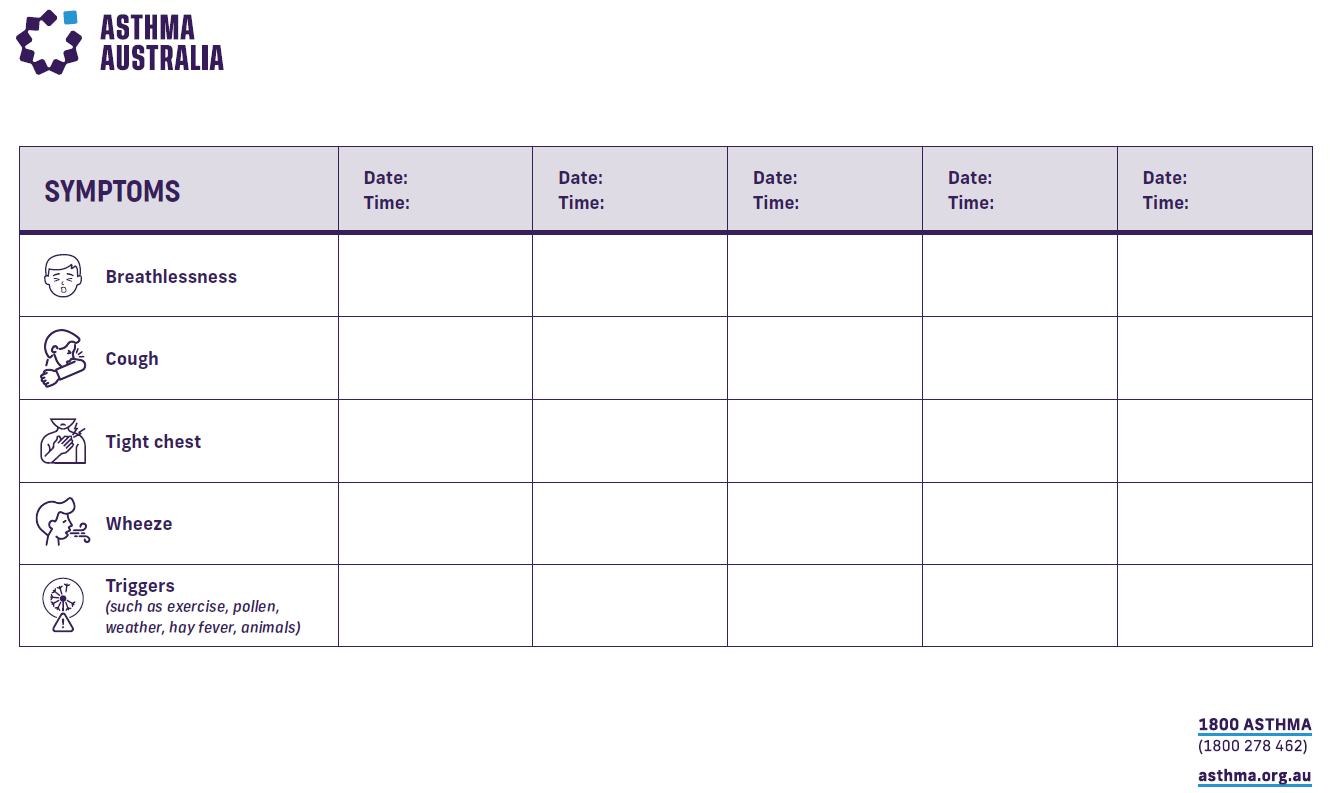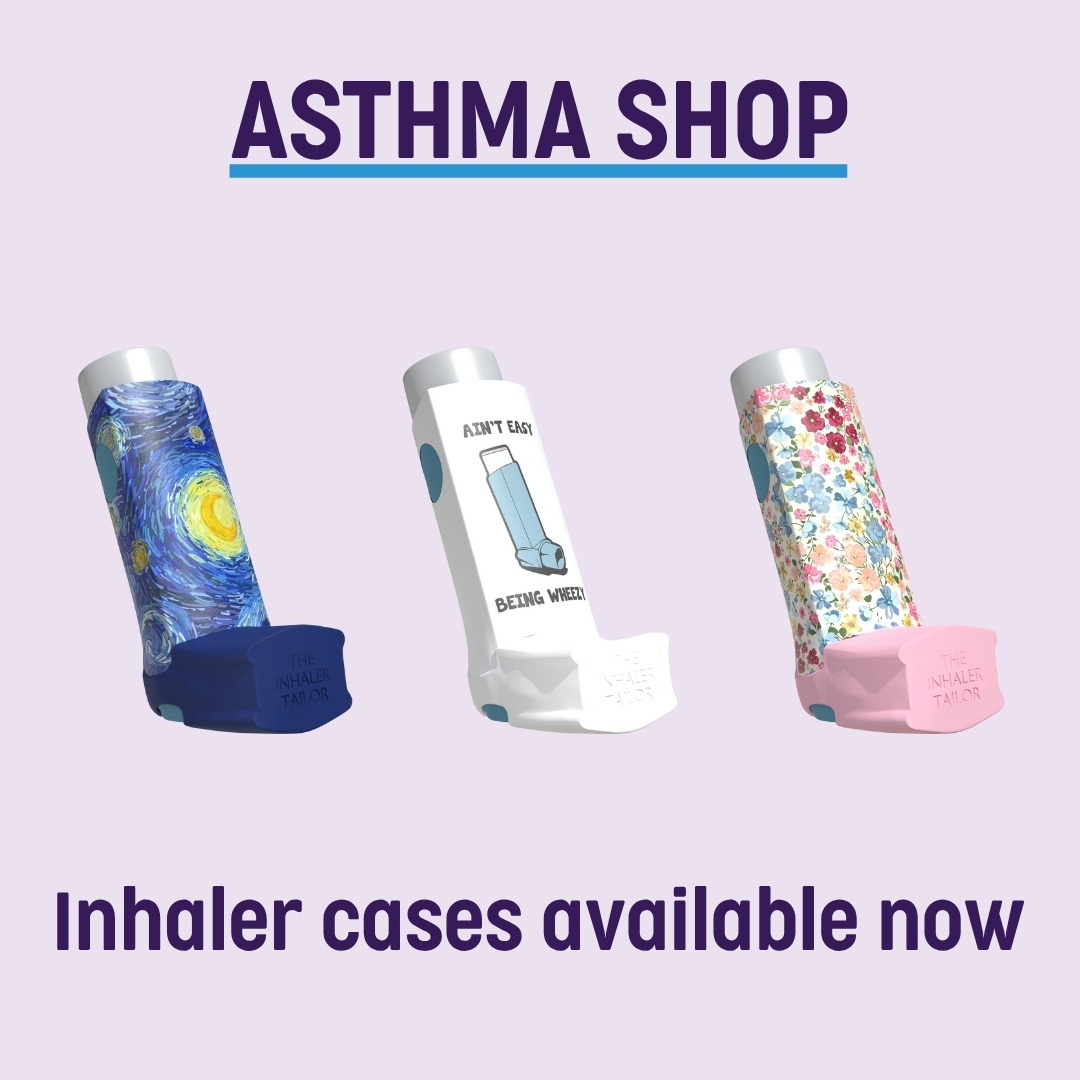Common causes of asthma symptoms and how to avoid them

Just like every superhero has their own nemesis, every child with asthma has their own triggers.
Triggers are the things that irritate your child’s lungs and make it hard for them to breathe.
Every child with asthma has different triggers.

Here we’ve listed some common asthma triggers and given them some fun names to help you talk to your kids about them.
Once you know what triggers your child’s asthma, your doctor can help you work out a plan to manage them with your child’s Asthma Action Plan.
 Getting sick is no fun. Professor Virus likes to make kids sick, especially at the start of school and in winter.
Getting sick is no fun. Professor Virus likes to make kids sick, especially at the start of school and in winter.
For people with asthma, a cold can be worse than just a runny nose and a cough. Colds and other viruses are the most common triggers for asthma symptoms.
Most of the time a cold doesn’t need any medicine. You just need to rest and let your body fight it. Sometimes a saline nose spray can help clear out your nose so you can breathe easier too. Saline is just salty water, so it’s very safe and it doesn’t hurt.
Best defence:
You can’t avoid Professor Virus, but you can try to stop him catching you:
- Wash your hands before you eat or touch your face, eyes or nose.
- Cough or sneeze into a tissue or your elbow .
- Avoid crowded spaces if you can, especially during cold and flu season.
- Get vaccinated every year.
- Stay home from school and sport when unwell.
- Clean or replace your spacer after you’ve been sick.
- Take good care of your asthma all year round. Remember to take your asthma preventer if you have one.
- Follow your Asthma Action Plan.
 Physical activity and playing can make you feel more breathless than usual if you have asthma. Physical activity is one of the most common triggers for kids. But this doesn’t mean you can’t do it! In fact, it is really important that you play and exercise everyday to help keep your lungs and body healthy.
Physical activity and playing can make you feel more breathless than usual if you have asthma. Physical activity is one of the most common triggers for kids. But this doesn’t mean you can’t do it! In fact, it is really important that you play and exercise everyday to help keep your lungs and body healthy.
Best defence:
It’s best not to play outside early in the morning or in the evening, because the cold air can also trigger your asthma. Don’t exercise if you are sick with a cough or a cold. When you do exercise or play sport, make sure to do a warm-up beforehand and cool down afterwards.
To protect you from Agent Breathless, your doctor might tell you to take some of your reliever before you play or do physical activity. If they do, you might need to ask the teacher for your inhaler before you do your sport or PE classes at school. Or if your doctor and parents are sure you can take your inhaler by yourself, they might ask the teacher to let you keep your inhaler with you. Make sure you ALWAYS use a spacer if your inhaler is a puffer.
 Smoke is very bad for your lungs and can trigger your asthma. Sneaky Smoky lives in all kinds of smoke, from cigarettes, bushfires, wood fire heaters and even campfires for toasting marshmallows.
Smoke is very bad for your lungs and can trigger your asthma. Sneaky Smoky lives in all kinds of smoke, from cigarettes, bushfires, wood fire heaters and even campfires for toasting marshmallows.
Best defence:
It is best to avoid wood fires and other smoke as much as possible.
If your neighbours are using a wood fire, your parents or carers can try asking them to stop and explain how the smoke can harm kids with asthma.
Parents and Carers
We hope that your neighbours are kind to you and your kids. However, if you need to take it further, you can contact your local council or your state’s Environment Protection Authority (EPA).
Health experts recommend electric heaters, as they do not release emissions into the interior air.
 Lots of kids with asthma also have hay fever which is a type of allergy. Things you breathe in can trigger your asthma, your hay fever or both!
Lots of kids with asthma also have hay fever which is a type of allergy. Things you breathe in can trigger your asthma, your hay fever or both!
Thundersneeze likes to make people sneeze, get itchy eyes and a runny nose. He might make you snore at night or trick you into thinking you have a cold all the time, even if you don’t!
His weapons are plant pollen, dust, dustmites, mould and animal allergens. Thundersneeze even uses thunderstorms to break the pollen down super small, so it can get deeper into your lungs. This can trigger very serious asthma attacks in people with asthma or hay fever.
Best defence
Once you figure out what triggers your hay fever, avoid them as much as you can.
Depending how old you are, and how bad your triggers are, your doctor might be able to prescribe something to help. This could be a nasal spray, medicine or even a tablet.
 Pollution Pirate makes the air dirty, which hurts your lungs when you breathe it in. Their weapons are bush fires, car and truck fumes and fumes from industries like mining. Pollution Pirate also adds to climate change, which makes our Earth warmer and can cause lots of problems for our health too.
Pollution Pirate makes the air dirty, which hurts your lungs when you breathe it in. Their weapons are bush fires, car and truck fumes and fumes from industries like mining. Pollution Pirate also adds to climate change, which makes our Earth warmer and can cause lots of problems for our health too.
Inside your home, gas stoves, gas heaters and other things that run on gas can also trigger your asthma. The fumes are invisible and you can’t smell them, but they still get into your lungs. These gas fumes have a big impact on kids’ asthma even more than adults.
Best defence:
Dirty air is really hard to avoid. You can try keeping your doors and windows closed in your house, and especially in your bedroom so the air stays clean inside. Also keep your windows shut in the car and have the air-conditioner set to ‘recirculate’.
In the kitchen, if your house has a gas stove, see if your parents or carers have an electric frypan or hotplate they can use instead when you are around. If there is no other option, try to stay out of the kitchen when the gas is in use and make sure the exhaust fan above the stove is used during cooking.
 Scent Ninja targets your nose. Things you breathe in can trigger your asthma or your hay fever - or both!
Scent Ninja targets your nose. Things you breathe in can trigger your asthma or your hay fever - or both!
Scent Ninja is extra sneaky because they can attack at any time of the year. Scent Ninja’s weapons include:
- Perfumes and deodorant
- Incense, scented candles and air fresheners
- Sprays from a spray can, like bug spray or mozzie repellent
- Strong smells like cleaning chemicals
Best defence:
Avoid Scent Ninja as much as you can! Once you figure out what triggers your symptoms, find ways you can swap them out of your home.
You might swap a bug-repellent spray for a roll-on. Stay away from incense and air fresheners. Swap spray deodorant for roll-ons for the whole family.
 Master Evil Chill creates cold, dry air. He is most active when the weather starts to change into winter, in cold early mornings and when it gets cool and dark at night.
Master Evil Chill creates cold, dry air. He is most active when the weather starts to change into winter, in cold early mornings and when it gets cool and dark at night.
Cold and dry air can bother your lungs. This can make it hard to breathe.
Best defence:
- Wear a scarf or face mask when it is cold. This can help protect you a little from the cold air.
- Don’t go outside to play in the early morning or cold evening.
Book a call with an Asthma Educator
Your nemesis
Some people find that their biggest asthma villain is something that no one else is bothered by. This can feel really annoying! The first step is to find out what the trigger is. This gives you the power to avoid it, or fight!
A good place to start is tracking your child’s symptoms and suspected triggers on a chart like the one below.
If you need help figuring out your child’s triggers, call us on 1800 ASTHMA (1800 278 462)! We can give you support between doctor’s visits and give you the information you need to feel confident to have a productive conversation with your doctor about your child’s asthma.

Print now








 Getting sick is no fun. Professor Virus likes to make kids sick, especially at the start of school and in winter.
Getting sick is no fun. Professor Virus likes to make kids sick, especially at the start of school and in winter. Physical activity and playing can make you feel more breathless than usual if you have asthma. Physical activity is one of the most common triggers for kids. But this doesn’t mean you can’t do it! In fact, it is really important that you play and exercise everyday to help keep your lungs and body healthy.
Physical activity and playing can make you feel more breathless than usual if you have asthma. Physical activity is one of the most common triggers for kids. But this doesn’t mean you can’t do it! In fact, it is really important that you play and exercise everyday to help keep your lungs and body healthy. Smoke is very bad for your lungs and can trigger your asthma. Sneaky Smoky lives in all kinds of smoke, from cigarettes, bushfires, wood fire heaters and even campfires for toasting marshmallows.
Smoke is very bad for your lungs and can trigger your asthma. Sneaky Smoky lives in all kinds of smoke, from cigarettes, bushfires, wood fire heaters and even campfires for toasting marshmallows. Lots of kids with asthma also have hay fever which is a type of allergy. Things you breathe in can trigger your asthma, your hay fever or both!
Lots of kids with asthma also have hay fever which is a type of allergy. Things you breathe in can trigger your asthma, your hay fever or both! Pollution Pirate makes the air dirty, which hurts your lungs when you breathe it in. Their weapons are bush fires, car and truck fumes and fumes from industries like mining. Pollution Pirate also adds to climate change, which makes our Earth warmer and can cause lots of problems for our health too.
Pollution Pirate makes the air dirty, which hurts your lungs when you breathe it in. Their weapons are bush fires, car and truck fumes and fumes from industries like mining. Pollution Pirate also adds to climate change, which makes our Earth warmer and can cause lots of problems for our health too. Scent Ninja targets your nose. Things you breathe in can trigger your asthma or your hay fever - or both!
Scent Ninja targets your nose. Things you breathe in can trigger your asthma or your hay fever - or both! Master Evil Chill creates cold, dry air. He is most active when the weather starts to change into winter, in cold early mornings and when it gets cool and dark at night.
Master Evil Chill creates cold, dry air. He is most active when the weather starts to change into winter, in cold early mornings and when it gets cool and dark at night.



